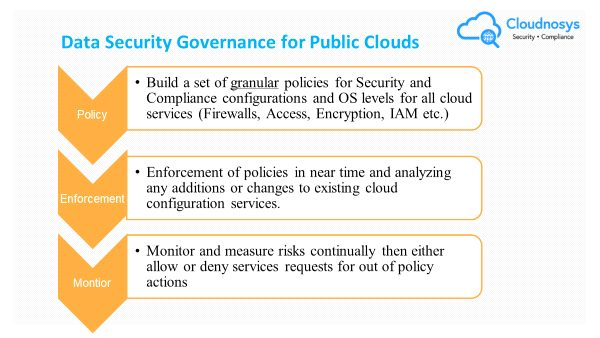‘Augmented creativity’: How AI can accelerate human invention

What we’re witnessing is the emergence of something called “augmented
creativity,” in which humans use AI to help them understand the deluge of
data. Early prototypes highlight the important role humans can, and should,
play in making sense of the suggestions proposed by the AI. OpenAI attempted
to replicate this approach with the release of a music-making tool called
Jukebox. While the achievement is significant from a technological
perspective, the results are unlikely to threaten the livelihoods of human
musicians. Various projects have also attempted to produce new and enticing
recipes by using AI to mine food composition databases and concoct interesting
combinations. For instance, Google researcher Sara Robinson recently showcased
her system that produced a cake-cookie hybrid. Accenture researchers
prototyped a similar recipe creation tool at their Dock facility in Dublin,
but with stomach-churning results. Most of these approaches utilize huge
datasets that AI mines to look for well-established yet previously untapped
connections. By using general adversarial networks (GANs), the next-generation
models are capable of coming up with ideas without requiring access to the
underlying logic.
Enterprise Architecture and Risk Management for banks: Aligned?
What does enterprise architecture mean for RMiT? Chief Architect of of ATD
Solution, Aaron Tan Dani, opined that enterprise architecture is important to
respond fast and to understand the impact of any action taken. One of the
outcomes of enterprise architecture is a digital enterprise map, a visual of
all the applications in the organisation’s IT environment and how they map
back to hardware, network, data, and ultimately to the objectives of the
business. There is proper and thorough traceability between each architecture
domains (Business, Data, Application and Technology), and troubleshooting of
the entire enterprise can be made, allowing strategic business decisions to be
made in an agile way. This Digital Enterprise Map is constructed
collaboratively with effort from every department and business unit across the
enterprise, enabling a single view of the connected organisation. In a
way, this map can also help organisations to address these questions: Are you
able to define your technology initiatives from a business perspective? Are
you able to model the strategy and provide the traceability on its execution?
Are you able to map the business strategies, objectives and goals to the
different capabilities/elements in the enterprise?
UK government needs a digital reboot

Over the last six months, the Commission on Smart Government has undertaken
extensive work in this domain to identify the major barriers to better digital
government. We have identified a number of areas in which action should be
taken to reduce barriers and build capability in this area. Many of the 60
recommendations the Commission makes in this area focus on reforms around
governance and leadership, without which we will never see digital and
technology matters viewed consistently alongside other top-tier issues.
Creating more effective, cross-departmental digital oversight, while allowing
for greater autonomy outside of Whitehall, forms the basis of many of our
recommendations – and that is why the latest organisational announcements are
so welcome. It will be vital, however, that the CDO role is empowered so far
as is possible – and should serve as the prime minister’s chief technology
adviser – and that chief digital roles exist in every department to ensure no
policy area is left behind and that each has a vision for a digitally enabled
future. This will see a requirement both for more dedicated technologists in
government as well as better digital skills among those responsible for
overseeing larger digital projects or local services.
Banks need to strike the right balance for digital transformation

Banks have increasingly understood they need outside help to execute their
digital transformation agenda. “Banks usually have very rigid systems and
procedures,” says Fei. “For instance, if you want to launch a new product
you have to follow the process, and it takes at least six months. In the age
of digitalization, this doesn’t work, as customers want things immediately.
This has put huge pressure on these financial institutions to build agile
operations and systems to be able to respond to the needs of their
customers.” But the number of tech companies pushing into financial services
can be overwhelming and not all of them have domain expertise, which can
lead to misguided attempts to apply new technologies everywhere. Without
experience of financial services, tech companies may also underestimate the
trade-offs involved in deploying certain digital tools. OneConnect
combines expertise in digital technology with deep knowledge of banking.
Fei, who has past experience working at HSBC China and Bank of Langfang, a
Chinese commercial bank, describes one partnership with a Chinese national
bank to reimagine its customer service center as an illustration of why
banking experience matters in digital reform.
Deep learning sharpens near-infrared images for cancer diagnostics

Fluorescence imaging is a valuable method for examining biological systems.
To achieve the maximum tissue penetration depth and minimum light
scattering, detecting near-infrared (NIR) fluorescence in the
long-wavelength end of the second NIR window (1500–1700 nm), known as
NIR-IIb, provides the best results. Unfortunately, NIR-IIb imaging relies on
nanoparticle fluorescent probes that often contain toxic elements, hindering
its clinical translation. Biocompatible small-molecule NIR fluorescent
probes do exist. Indocyanine green (ICG), for example, is approved by the US
Food and Drug Administration and has already been used for clinical
applications. Such small-molecule fluorophores, however, emit in the
shorter-wavelength NIR-I and NIR-IIa windows (700–1000 and 1000–1300 nm).
And light scattering at these wavelengths limits the imaging depth and
causes low contrast images. To achieve high image contrast and clarity while
using biocompatible probes, Zhuoran Ma, his PhD adviser Hongjie Dai, and
colleagues at Stanford University turned to deep learning. Using roughly
2800 in vivo images of mice taken in the NIR-IIa and NIR-IIb windows, they
trained artificial neural networks to transform blurred NIR-IIa fluorescence
images into higher-resolution images previously only achievable using
NIR-IIb.
Deep learning doesn’t need to be a black box

Deep learning models are usually trained on a single data set of annotated
examples. Concept whitening introduces a second data set that contains
examples of the concepts. These concepts are related to the AI model’s main
task. For instance, if your deep learning model detects bedrooms, relevant
concepts would include bed, fridge, lamp, window, door, etc. “The
representative samples can be chosen manually, as they might constitute our
definition of interpretability,” Chen says. “Machine learning practitioners
may collect these samples by any means to create their own concept datasets
suitable for their application. For example, one can ask doctors to select
representative X-ray images to define medical concepts.” With concept
whitening, the deep learning model goes through two parallel training
cycles. While the neural network tunes its overall parameters to represent
the classes in the main task, concept whitening adjusts specific neurons in
each layer to align them with the classes included in the concept data set.
The result is a disentangled latent space, where concepts are neatly
separated in each layer and the activation of neurons correspond with their
respective concepts.
Blockchain Beyond Bitcoin: Transforming FinTech, Healthcare, And More

One would be hard-pressed to find a use case in financial services that
wouldn’t benefit from blockchain, save for in-person payments given the
single-digit TPS (transactions per second) vs the modern payment rails that
operate in the tens of thousands of TPS. Trade finance, asset management,
capital markets, banking and lending, insurance, etc. all would realize
increased privacy, accuracy, and security from the distributed, immutable
ledger technology. On cross-border settlement transactions alone, a report
by Jupiter Research shows that blockchain deployments will enable banks to
save up to $27 billion by the end of 2030, reducing costs by more than 11%.
Financial institutions acknowledge that Blockchain technology will save
billions of dollars for banks and major financial institutions over the next
decade. Payments is a category on which blockchain efforts are
concentrated. This is an obvious conclusion, being that on the blockchain,
AP/AR is easily tracked and verified, duplications are virtually impossible,
and smart contracts can automate the process based on agreed-upon terms.
However, cryptocurrencies have proven too volatile and slow to be an
adequate payment solution in most cases.
Answers to the Most Common Questions about Enterprise Architecture

The importance of enterprise architecture will depend a lot on what the
organization does with their EA. Orbus have found as many as 28 different
use cases for iServer across our customer base, and even that figure is not
likely to encompass every activity. Some enterprises may simply use their
enterprise architecture to reduce IT costs, but for others it can have
transformative impacts. In fact, the prime use of enterprise
architecture is to drive digital transformation. Planning changes over short
and long periods, predicting the impacts of changes, gathering stakeholder
views, and executing change are all possible through the correct application
of EA. In general, EA will make firms more agile, able to react quickly to
external events and deal with shocks. Indeed, perhaps the best reason to
have enterprise architecture has been revealed through the coronavirus,
which has forced huge changes in the ways that organizations do business in
rapid time. Those firms that could very quickly pivot to working from home
and e-commerce were left in much better shape than others. Within the
field of Enterprise Architecture are a host of sub architectures that
represent different parts of the organization.
Tech partnership to drive Finland’s quantum computing project

Micronova, a national research and development infrastructure resource
operated jointly by VTT and Aalto University, will provide the clean room
environment to build the quantum computer and associated components at a
dedicated facility at Espoo, southwest of Helsinki. The build will use
Micronova’s specialised input and micro- and nanotechnology expertise to
guide the project. The project marks the latest phase in cooperation
between VTT and Aalto University. The two partners are also involved in a
joint venture to develop a new detector for measuring energy quana. As
measuring the energy of qubits lies at the core of how quantum computers
operate, the detector project has the potential to become a game-changer in
quantum technology. IQM’s collaborative role with VTT emerged following an
international public tender process. All partners expect to see robust
advances in the quantum computing project in 2021, said Jan Goetz, CEO of
IQM. “This project is extremely prestigious for us,” said Goetz. “We
will be collaborating with leading experts from VTT, so this brings a great
opportunity to work together in ways that help build the future of quantum
technologies.”
Data Governance for the Multi-Public Cloud: Top 10 AWS Best Practices

Start with building policies and write them into code, or scripts that can be
executed. This requires compliance and cloud security experts working together
to build a framework for your complex business. You cannot start from scratch
as it will be error-prone and will take too long. Try to invest in some Cloud
security tools then build your process and policies to run at scale to meet
and exceed compliance and governance. ... Visibility means not only understand
your inventory of assets which changes by the minute but at the same time
understand the risk ratings for each asset and prioritize the remediation
accordingly. Again, you will need to invest in some commercial tools that can
provide the above. Risk analysis and constantly monitoring security policies
to see if they are being enforced is not a simple task with home built
scripts. ... Now, either you build all the integrations into all these tools
or invest in some third-party tools. At some point, you need to comprehend the
“Holistic” view of security or context around specific alert so that you can
prioritize things, or else it will be lots of noise. Note none of the cloud
vendors offer any holistic risk management tools.
Quote for the day:
"Integrity is the soul of leadership! Trust is the engine of leadership!" -- Amine A. Ayad
No comments:
Post a Comment